'THE BASSETLAW' HIBERNO-SAXON GILT BRONZE MOUNT WITH DRAGONS LATE 7TH-8TH CENTURY A.D. 3 1/2 in. (84 grams, 87 mm). A large openwork fitting, D-shaped in section with incised running keystone and zigzag to the upper and lower faces; openwork plate waisted in profile and formed as three cells flanked by S-coiled beasts; the upper beasts with one raised three-toed forelimb, D-shaped facing mask with pellet eyes, hatched detailing to the body, tribrach to the shoulder, clubbed tail coiled against the body; the lower beasts similar with anguiform details; the upper and lower cells D-shaped, the central one a lozenge, with a column of a hatched fish between; pierced at the upper corners and lower cell, two lateral pierced attachment lugs; ferrous remains, lug and part of a separate rivetted bronze plate to the reverse. PROVENANCE: Found whilst searching with a metal detector in Bassetlaw, Nottinghamshire, East Midlands, UK, from Tuesday 1 January to Wednesday 1 May 2013. with TimeLine Auctions, 23 May 2017, no.494. Accompanied by a copy of the British Museum's Portable Antiquities Scheme (PAS) six page report with refence no.DENO-4207C5 and is designated as 'a find of note'. This lot has been checked against the Interpol Database of stolen works of art and is accompanied by search certificate no.12077-210997. LITERATURE: See Arrhenius, B., Merovingian Garnet Jewellery, Stockholm, 1985; Bourke, C. Irish Croziers of the Eighth and Ninth Centuries in Ryan, M. (ed.) Ireland and Insular Art AD 500-1200, Dublin, 1987; Webster, L. & Backhouse, J., The Making of England. Anglo-Saxon Art and Culture AD 600-900, London, 1991; Laing, L. A Catalogue of Celtic Ornamental Metalwork in the British Isles c.AD 400-1200, BAR British Series 229, Oxford, 1993, item 244 (Steeple Bumpstead boss); Carver, M., Sutton Hoo. A Seventh Century Princely Burial Ground and its Context, London, 2005. FOOTNOTES: This mount is unusual, although its decoration and manufacturing techniques point to an origin in the British Isles in the 7th-9th centuries. Its D-shaped upper face or ledge indicates that it is not the standard flat form of scabbard or harp fitting. The openwork nature of the casting is equally unusual, although the Steeple Bumpstead boss (British Museum accession no. 1916,0705.1) is formed with an openwork frame into which gilt bronze panels have been inserted, and several Irish croziers were manufactured in this manner (Bourke, 1987). The cells were probably intended to accept a glass inset gem, or an ivory or millefiori panel, although the inner panel of the central cell shows signs of having been gilded as if to reflect light through a translucent gem in the same manner as the foils placed behind the garnets on 6th-7th century Anglo-Saxon jewellery and weapon-fittings (Arrhenius, 1985; Carver, 2005). The beasts (especially the upper pair) show strong Irish influence in their design, which is found elsewhere in Northumbrian art in the 8th-9th century as for example on the brow fittings of the Coppergate helmet (Webster & Backhouse, item 47). Similar heads in profile appear on the scabbard chapes from the St. Ninian's Isle Treasure (Wilson, plate IV). The overall design of the piece is tentatively identified with the 'fish flanked by birds' motif seen for example in the Staffordshire Hoard, probably of later 7th century date. CONDITION
'THE BASSETLAW' HIBERNO-SAXON GILT BRONZE MOUNT WITH DRAGONS LATE 7TH-8TH CENTURY A.D. 3 1/2 in. (84 grams, 87 mm). A large openwork fitting, D-shaped in section with incised running keystone and zigzag to the upper and lower faces; openwork plate waisted in profile and formed as three cells flanked by S-coiled beasts; the upper beasts with one raised three-toed forelimb, D-shaped facing mask with pellet eyes, hatched detailing to the body, tribrach to the shoulder, clubbed tail coiled against the body; the lower beasts similar with anguiform details; the upper and lower cells D-shaped, the central one a lozenge, with a column of a hatched fish between; pierced at the upper corners and lower cell, two lateral pierced attachment lugs; ferrous remains, lug and part of a separate rivetted bronze plate to the reverse. PROVENANCE: Found whilst searching with a metal detector in Bassetlaw, Nottinghamshire, East Midlands, UK, from Tuesday 1 January to Wednesday 1 May 2013. with TimeLine Auctions, 23 May 2017, no.494. Accompanied by a copy of the British Museum's Portable Antiquities Scheme (PAS) six page report with refence no.DENO-4207C5 and is designated as 'a find of note'. This lot has been checked against the Interpol Database of stolen works of art and is accompanied by search certificate no.12077-210997. LITERATURE: See Arrhenius, B., Merovingian Garnet Jewellery, Stockholm, 1985; Bourke, C. Irish Croziers of the Eighth and Ninth Centuries in Ryan, M. (ed.) Ireland and Insular Art AD 500-1200, Dublin, 1987; Webster, L. & Backhouse, J., The Making of England. Anglo-Saxon Art and Culture AD 600-900, London, 1991; Laing, L. A Catalogue of Celtic Ornamental Metalwork in the British Isles c.AD 400-1200, BAR British Series 229, Oxford, 1993, item 244 (Steeple Bumpstead boss); Carver, M., Sutton Hoo. A Seventh Century Princely Burial Ground and its Context, London, 2005. FOOTNOTES: This mount is unusual, although its decoration and manufacturing techniques point to an origin in the British Isles in the 7th-9th centuries. Its D-shaped upper face or ledge indicates that it is not the standard flat form of scabbard or harp fitting. The openwork nature of the casting is equally unusual, although the Steeple Bumpstead boss (British Museum accession no. 1916,0705.1) is formed with an openwork frame into which gilt bronze panels have been inserted, and several Irish croziers were manufactured in this manner (Bourke, 1987). The cells were probably intended to accept a glass inset gem, or an ivory or millefiori panel, although the inner panel of the central cell shows signs of having been gilded as if to reflect light through a translucent gem in the same manner as the foils placed behind the garnets on 6th-7th century Anglo-Saxon jewellery and weapon-fittings (Arrhenius, 1985; Carver, 2005). The beasts (especially the upper pair) show strong Irish influence in their design, which is found elsewhere in Northumbrian art in the 8th-9th century as for example on the brow fittings of the Coppergate helmet (Webster & Backhouse, item 47). Similar heads in profile appear on the scabbard chapes from the St. Ninian's Isle Treasure (Wilson, plate IV). The overall design of the piece is tentatively identified with the 'fish flanked by birds' motif seen for example in the Staffordshire Hoard, probably of later 7th century date. CONDITION


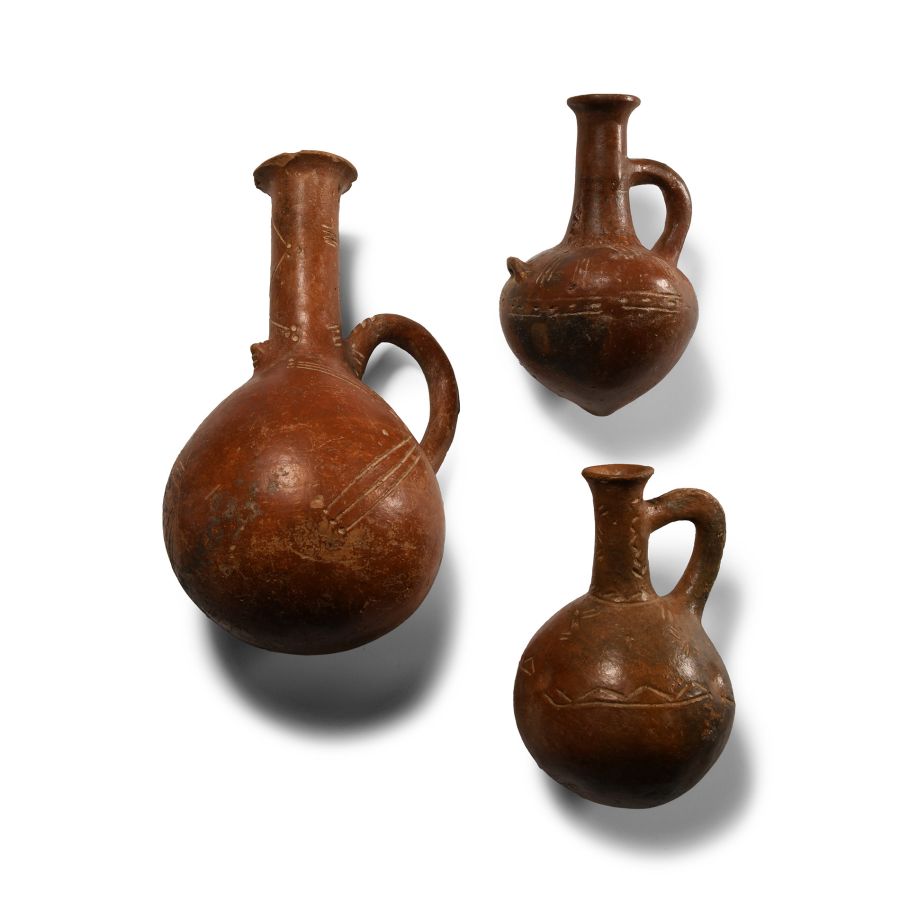
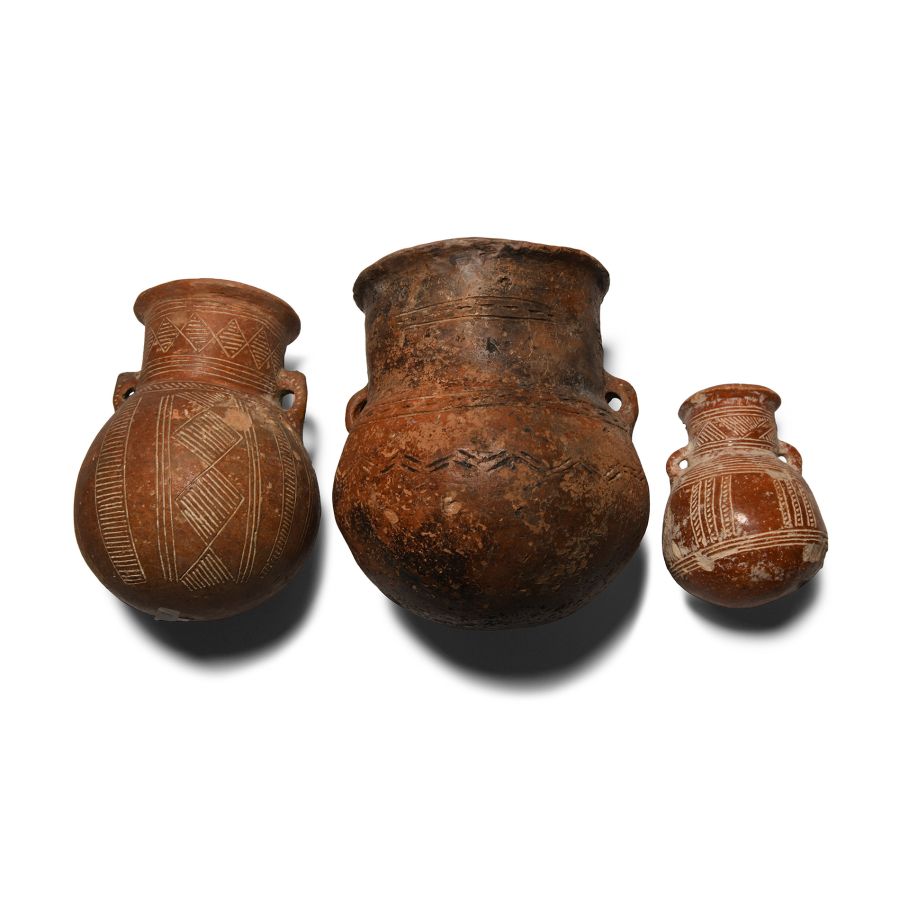
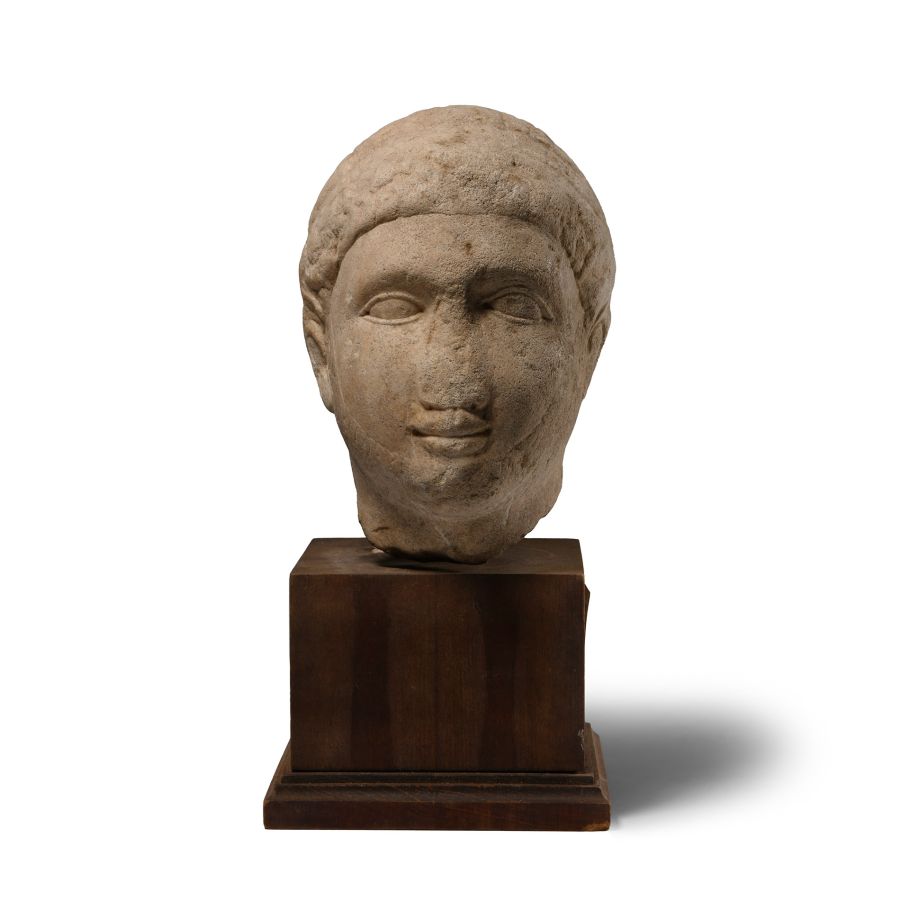
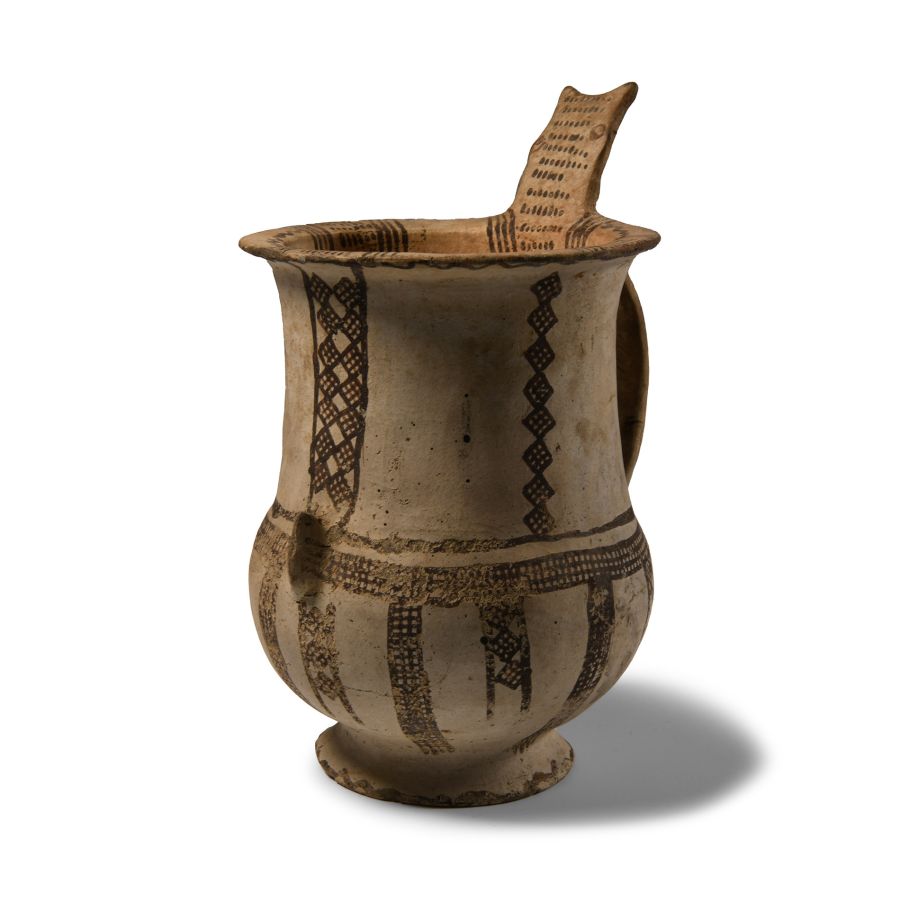





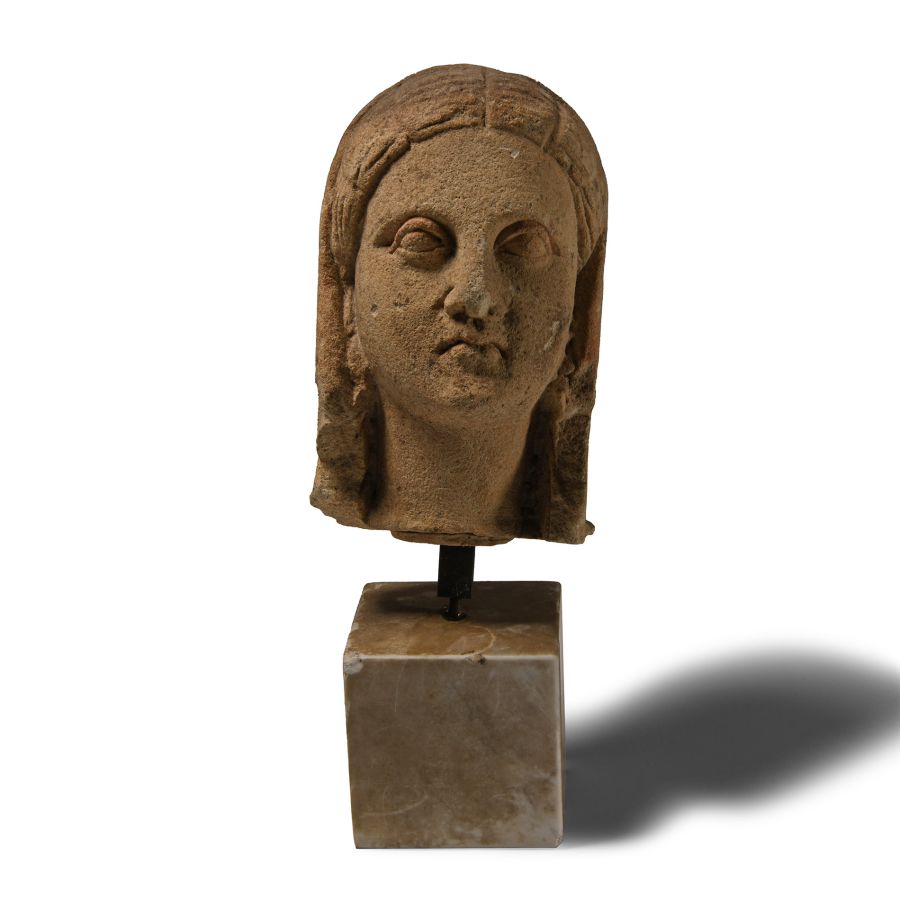



Try LotSearch and its premium features for 7 days - without any costs!
Be notified automatically about new items in upcoming auctions.
Create an alert